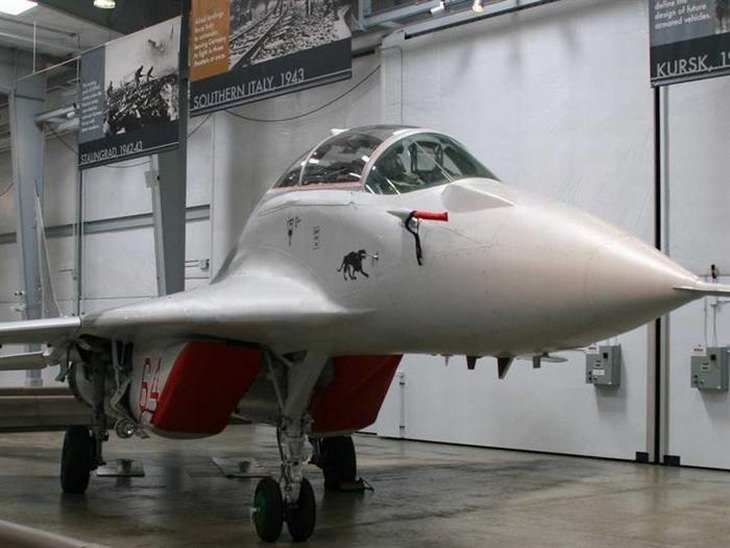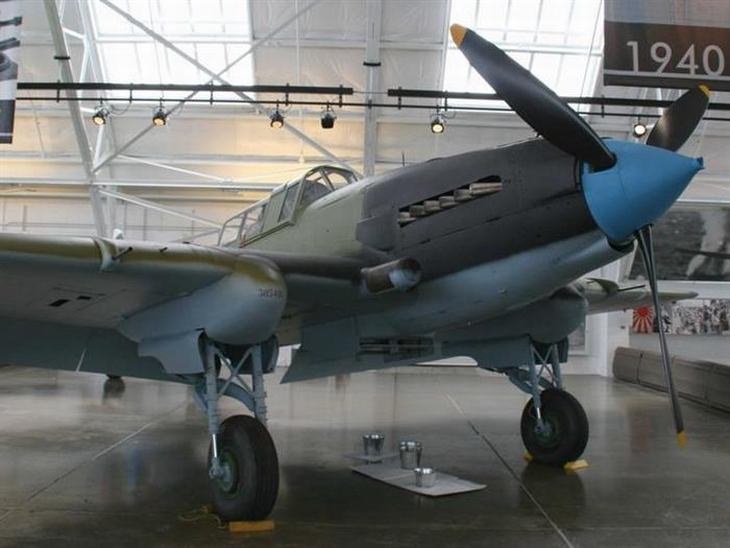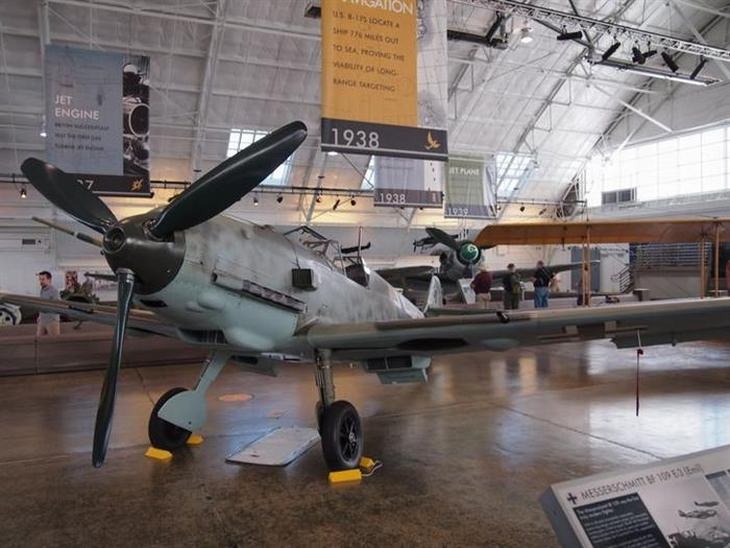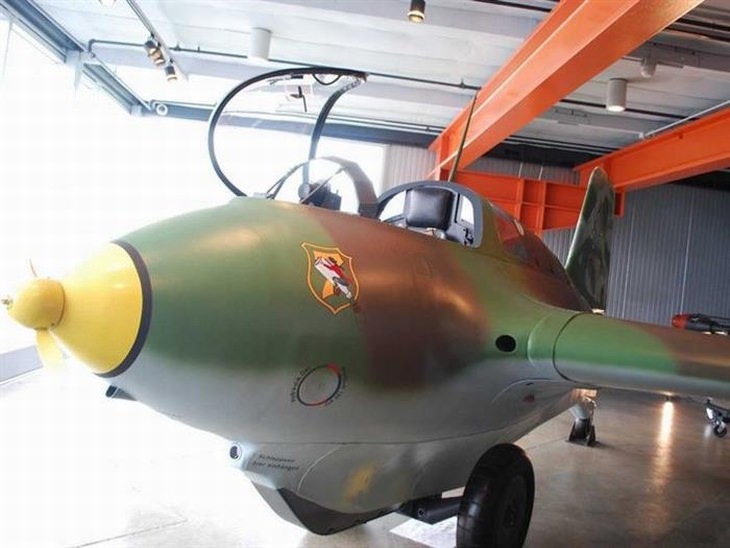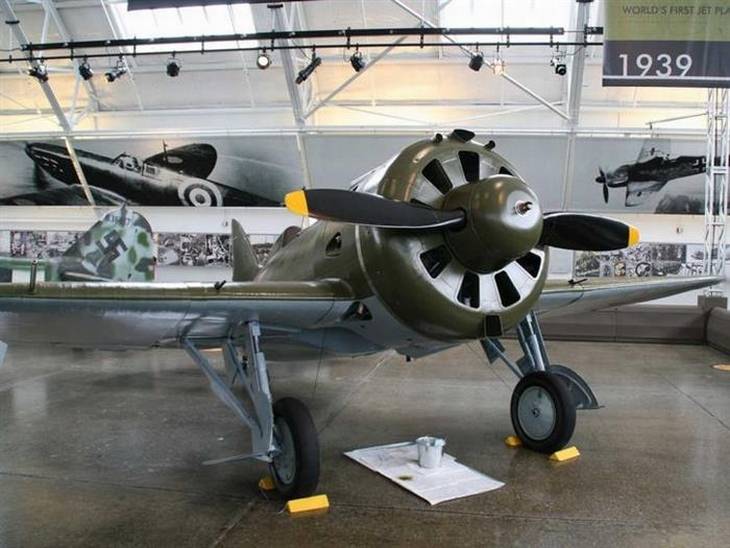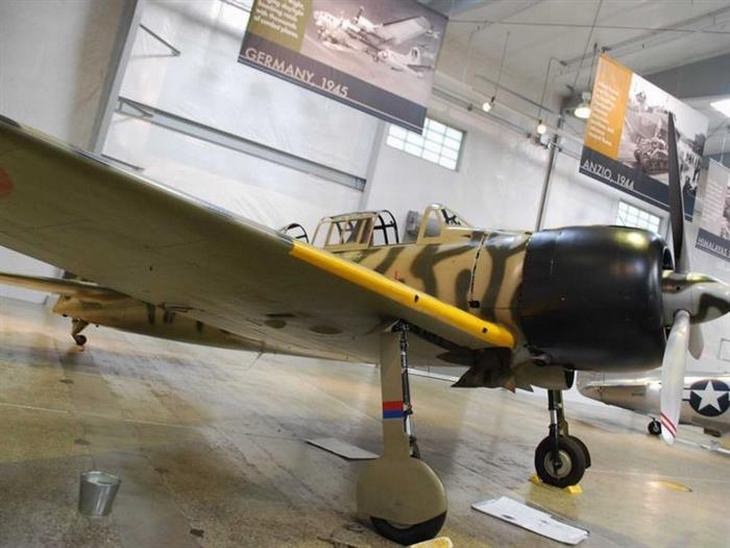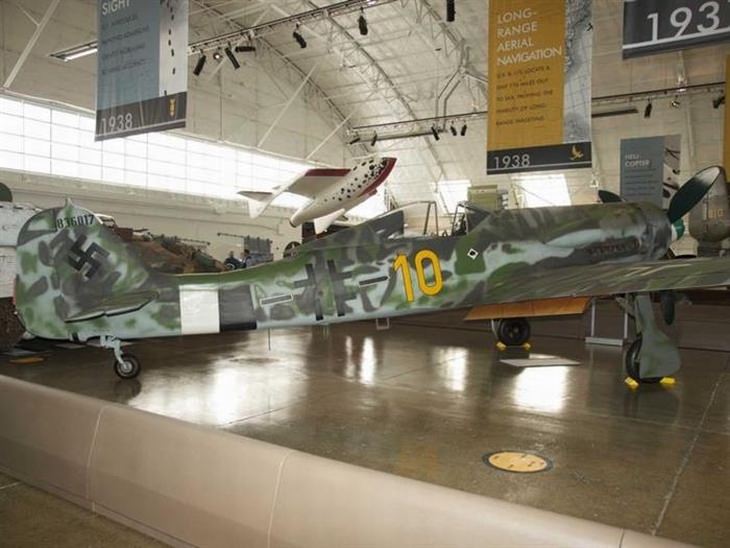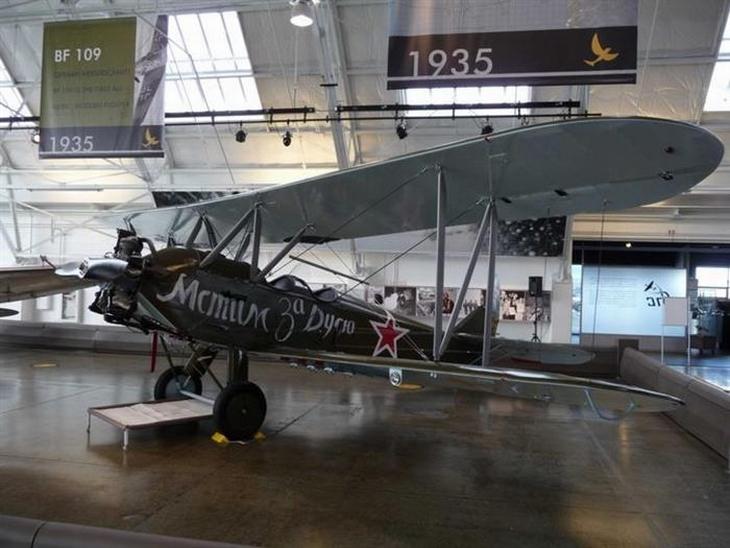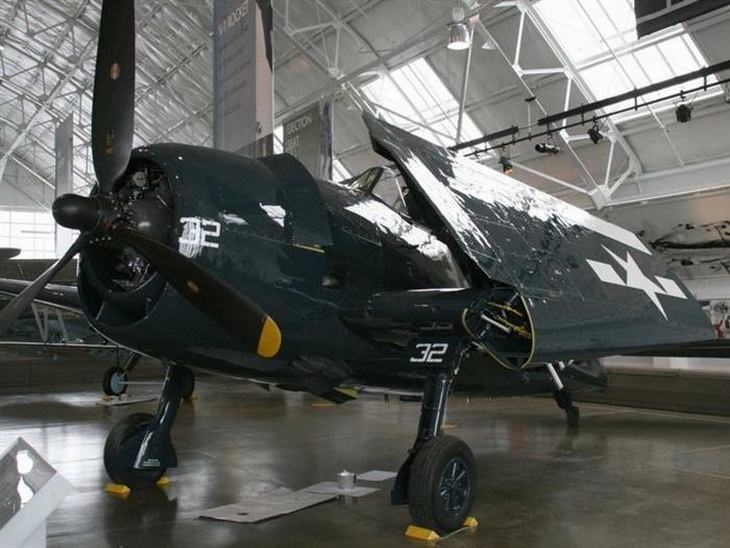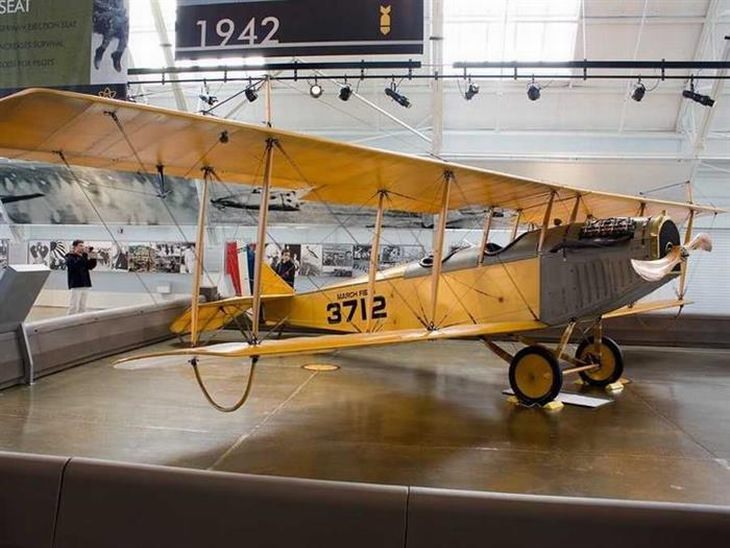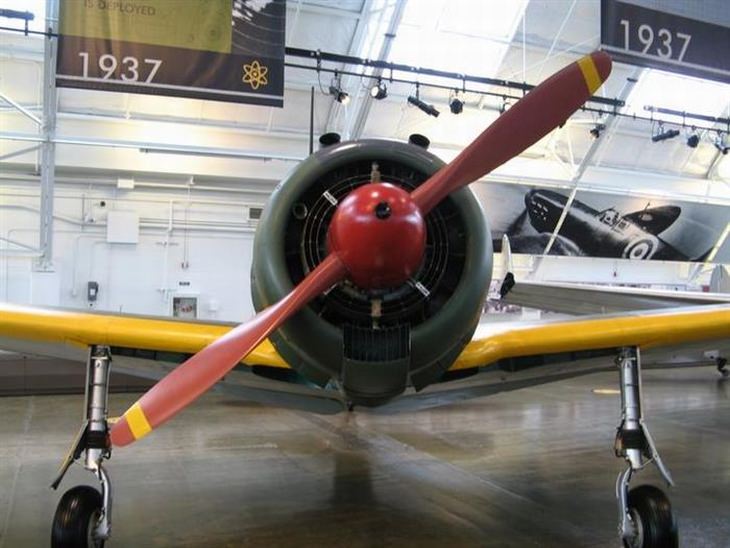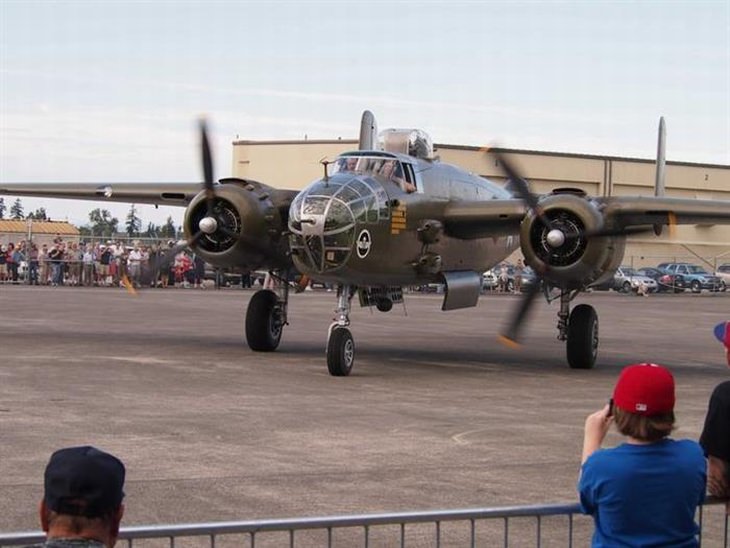1. MiG-29 Fulcrum (Russia)
The MiG-29 Fulcrum was the Soviet Union's move to counter US fighter planes of the 1970s, such as the McDonnell Douglas F-15 Eagle, and the General Dynamics F-16 Fighting Falcon. This fighter was created by the Mikoyan Design Bureau.
2. Ilyushin Il-2 (Russia)
The Il-2 was commonly referred to as the "Black Death" and "Flying Tank" by soldiers due to its heavy armor protection. The Flying Tank was virtually impossible for enemy fighter planes to shoot down. With that being said, the model seen here crashed in 1944 after it was struck by anti-aircraft fire. It was found in a lake in 1991 by a group of boy scouts with its rockets and bombs still attached to its wings.
3. Messerschmitt BF 109 E-3 (Germany)
The Messerschmitt was built in Germany in 1939 and piloted by Eduard Hemmerling. He destroyed several British planes before being shot down and crashing off the coast of Cape Blanc Nez, France. The model seen here was discovered by a man walking on a beach of Calais, who spotted the plane's wing poking out from beneath the sand in 1988.
4. Supermarine Spitfire (United Kingdom)
The Spitfire was Great Britain's response to the Messerschmitt fighter plane of the early 1940s. The aircraft was manufactured by Supermarine and featured an elliptical wing. Pilots dubbed it "a ballerina in flight" due to its easy maneuverability. The Spitfire was said to have been responsible for the Allied victory in the Battle of Britain. The model here was fully restored after it was shot at during a raid over enemy territory.
5. The Hawker Hurricane (United Kingdom)
Although the previously-listed Spitfire is by far the more famous fighter of the two, the Hawker Hurricane actually managed to destroy more Axis aircraft during WWII. Many historians believe that the Hawker was Great Britain's secret weapon for victory during the war. The particular plane in the museum, delivered to the Royal Canadian Air Force in 1942, never saw any action. It made its way to the museum after being recovered from a farm in Ontario.
6. The Messerschmitt 163 Komet (Germany)
The Komet was a rocket-propelled fighter, built specifically to destroy high-altitude bomber planes. Unfortunately, its fatal flaw was its Walter rocket motor, which had a tendency to explode mid-flight. It was, however, a breakthrough in technology at the time. The model seen here is only one of a dozen Me-163 fighter planes left in existence.
7. The Fieseler Storch (Germany)
Storch is German for stork, and the plane apparently got its name from its resemblance to one. The plane's wings made it unique - they could be folded up and the plane could be transported by train. The Storch once rescued Benito Mussolini from a prison rooftop in 1943, and even served as a form of transportation for Adolph Hitler. The model seen here was found in East Germany sometime in the mid-1980s and has been fully restored since.
8. The Focke-Wulf 190 (Germany)
For its time, the Focke-Wulf 190 was the most advanced radial engine fighter plane in the world. The bomber's unique design made it ideal for use in ground attack missions, and German pilots had high praise for its low-altitude flying ability. The plane seen here was discovered in the mid-1980s by a Russian hunter. It was subsequently transported to the United Kingdom, where it was restored to its original condition. Remarkably, it had remained largely intact despite crashing in a field.
9. Polikarpov I-16 (Russia)
The Polikarpov, nicknamed Rata or "rat", was actually the world's first single-winged fighter plane with retractable landing gear. The plane was named after Nikolai Polikarpov, who built the Rata under strict supervision by Soviet dictator, Joseph Stalin. Stalin wanted a superior aircraft to help lead the Red Air Force in combat. The model seen here was discovered in 1991 - in the same factory where it had originally been manufactured.
10. Mitsubishi A6M Zero (Japan)
What made the Zero truly unique was its ability to outmaneuver Allied fighter planes, thanks to its tiny turning radius and lightning-quick speed. Its main flaw was its lack of armor, which gave enemy planes a better chance of shooting it down - assuming they could keep up with it! The Zero model seen here was recovered in New Zealand sometime after WWII. It has since been fully restored to airworthy condition.
11. Focke-Wulf FW 190 D-13 (Germany)
The Focke-Wulf 190 made its debut in 1937 and rivaled the British Spitfire, even proving to be superior to it in some respects. It was a supreme killing machine, taking on the nickname of "Würger", which means "Butcher Bird". This particular plane is airworthy, but it will likely never leave the ground due to its extreme rarity.
12. Polikarpov U-2 (Russia)
Prior to WWII, the PO-2 was initially designed as a crop duster and gained notoriety thanks to the female Russian pilots that flew them. They would fly the planes at night over German encampments. While the bases did not sustain major damage, the sorties proved effective at keeping German troops on their toes. The fact that the pilots were women particularly rattled them. The model seen here was recovered in Belarus and later restored by the Polis Aero Club
13. Curtiss P-40C Tomahawk (United States)
The P-40C Tomahawk came into being as a replacement for its older brother, the P-36. The P-40C was a revered fighter plane due to its cost efficiency and the possibility of dispatching it at a moment's notice during wartime. The shark mouth design, as used by the Flying Tiger squadron, forever etched it into the memory of devoted aviation fans. The model seen here was made in the USA and is the only airworthy P-40C in existence.
14. Grumman Hellcat (United States)
The Hellcat was considered one of the best fighter planes to engage in combat over the Pacific. Its ability to withstand enemy fire led pilots to nickname it the "Aluminum Tank." It was built to outperform the Japanese Mitsubishi Zero and had folding wings for compact hangar and deck storage. The Grumman Aircraft Engineering Corporation was able to produce one Hellcat per hour, a feat that hasn't been matched by any other airplane manufacturer to this very day. The model seen here is only one of a few remaining in the world.
15. The White Knight (United States)
The White Knight was developed by an American aerospace company called Scaled Composites. The spacecraft features a pair of J-85 GE-5 turbojet engines and is funded by aerospace engineer Burt Rutan and Paul Allen himself. The 8,000lb (3,623kg) plane is able to launch at an altitude of 8.7 miles (14km). In order to prepare pilots for spaceflight, the White Knight's cockpit was configured to resemble SpaceShipOne.
16. North American P-51 Mustang (United States)
The Mustang is the fighter plane that's given the most credit for the Allied victory in Europe during WWII. Lieutenant Harrison B."Bud" Tordoff, who flew this very plane, had been assigned to conduct daylight raids against Germany. He assisted numerous Allied ground forces all across Europe during the war. Since then, the plane was stored in Raydon, England before ending up in Paul Allen's museum. The P-51 was fitted with a Rolls-Royce Merlin engine and had an impressive flying range. Lt. Tordoff was reunited with his former "baby" during a visit to Allen's museum in 2003.
17. Curtiss JN-4 Jenny (United States)
Jenny was the brainchild of American engineer, Glenn Curtis. The plane wasn't anything special in terms of its features, but it was highly cost-efficient to produce. Many US and Canadian fighters were trained to pilot the Jennys, but never made it into combat. After WWI, the planes were then used to entertain people at flight shows. The daredevil pilots would even give rides to audience members. The Jenny seen here was made in 1918 and remains one of just a few left in existence today.
18. Nakajima Ki-43 "Oscar" (Japan)
The Kamikaze pilots of Japan had favored the lightweight fighter planes for their ease of maneuverability. Although the Oscar planes were easy to fly, they weren't much use in combat, because they were slow and had limited firepower. The model seen here was discovered in Rabaul, Papua New Guinea. Ironically, the plane was repaired by former Japanese soldiers using parts from other salvaged Oscars.
19. North American B-25J Mitchell (United States)
The B-25 shot to fame when it became the first American aircraft to bomb the Japanese mainland. The B-25 was assigned to Lt. Col. Jimmy Doolittle, who took off from the Hornet aircraft carrier in 1942 en route to Japan. He and his fellow pilots made their way across the Pacific before carrying out their mission. The U.S. Army kept the vast majority of the B-25s after the war and used them as transports and training aircraft. The model here was built in 1944 and served the Royal Canadian Air Force for a decade before it was sold off in 1961.
20. Republic P-47 Thunderbolt (United States)
Take one look at this gigantic, seemingly indestructible aluminum frame, and you can tell why many US fighter pilots flew this airplane. The Thunderbolt's engine was considered "unbreakable", and the plane even featured .50-caliber machine guns and heavy armor. The U.S. Army Air Corps began manufacturing the Thunderbolt in 1941 for the upcoming campaign in Europe. The model seen here was manufactured by Republic Aviation of Evansville, Indiana. The Thunderbolt features the trademark "Tallahassee Lassie" logo and was piloted by Col. Ralph C. Jenkins.

